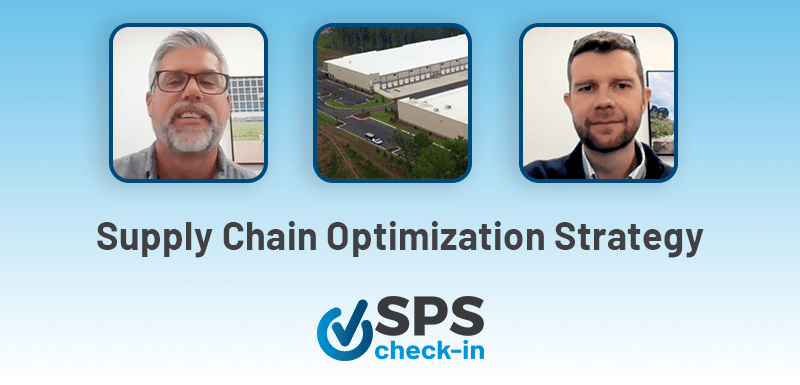
The SPS Check-in features news about SPS, the O&P industry, business trends, and changes to the regulation environment. In this episode, Sales Director Jamie Seabold talks with Vice President of Operations Coleson Chase about our supply chain optimization strategy.
The following includes a lightly edited transcript of their conversation:
Jamie: Welcome to The SPS Check-In and happy 2022 everybody! I’m joined today by Coleson Chase, VP of Operations at SPS, to share some exciting news.
Coleson: Thanks Jamie. Indeed we do have some exciting news to share today. We recently announced our strategy to optimize our distribution operations.
Jamie: Nice, sounds like a lot going on at SPS. Can you walk us through what that strategy looks like?
Coleson: Absolutely! To give you some background: seeing the changing landscape in the supply chain, we decided to be proactive and build a new long-term strategy. Knowing an optimized supply chain is critical for O&P clinics, we needed an innovative solution to create efficiencies for customers, and give them back valuable time to focus on patient outcomes. We developed our strategy to ensure productivity in our supply chain including establishing a regional warehouse network with East and West distribution centers with almost 50% more SKUs in inventory, reducing drop ships, and increasing service levels. Additionally, as we recently did in our new East warehouse, we will be rolling out new warehouse automation, technologies, and equipment to our West warehouse soon.
Jamie: Okay, so let’s dig in and talk about this regional warehouse network. We just upgraded our Alpharetta warehouse. Can you tell us a little about what we did there?
Coleson: With the opening of our new Alpharetta warehouse last year, we’ve doubled our capacity and now stock over 30,000 SKUs in that one location—36,000 to be exact. We’ve also heavily invested in new technologies and processes in Alpharetta, such as our two Packsize machines that folds and cuts boxes to the right dimensions, our upgraded warehouse management system that streamlines operations, and many others enhancements. We’ve also added a few thousand SKUs to our Reno facility, and plan to do more upgrades as well.
Jamie: With the focus on building out the inventory in the two regional warehouses and making these upgrades, what does that mean for our warehouses in Dallas and Chicago?
Coleson: With two regional warehouses using upgraded technology, we will no longer need our smaller facilities in Chicago and Dallas. We will be winding down operations at both of these warehouses and moving customers over to the new regional network.
Jamie: When will this transition take place?
Coleson: We have been preparing for this for quite a while by building-up capacity at our regional distribution centers, so we’re ready to transition in the next few weeks. We expect all Chicago and Dallas customers to be out of those distribution centers and into one of the regional warehouses by the end of Q1.
Jamie: So what benefits can our customers transitioning into the East and West warehouses expect with this strategy?
Coleson: First of all, by stocking double the amount of SKUs as before, we can provide more products in one box, cutting down on shipping costs and lead time. Instead of receiving one box from Alpharetta, one box from Chicago, and another as a dropship from suppliers—customers will get most items from one location in one box.
Additionally, with our new warehouse management system and other technological investments, customers will see an increase in pick accuracy and more efficient box sizes and packing.
And finally, by reducing the number of drop ships, customers will also have more visibility so they can adequately plan appointments with their patients.
Jamie: Thank you, Coleson. These all sound like pretty exciting changes that our customers will be able to benefit from.
Coleson: Yes, absolutely. I expect they will.
Jamie: And of course, with these big changes ahead, I’m sure many of our customers will have questions, so let me take a minute to remind our viewers, if you have any questions, your SPS Sales Manager is there to help. They can provide you with additional guidance about what this means for you, when you’ll transition, and anything else you need to know.
With that, thank you, Coleson. I appreciate you joining me today to share this exciting news.
Coleson: Glad to be here. Thanks, Jamie.
For questions about the distribution changes, please connect with your Sales Account Manager.
Sign-up for our email newsletter to receive the latest news, happenings, and promotions from SPS!
See also:
SPS Check-in: Discussion on Backorders and Manufacturer Supply Chain Challenges
SPS Check-in: Interview with VP of Operations Coleson Chase
SPS Check-in: Interview with VP of Procurement Eric Craig
Why Distributor Partnership Pays



